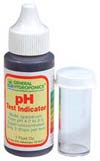pH/TDS/PPM levels for Hydroponic plants
The pH scale is a way to measure the Acid or Basic (alkaline) in nutrient solution. The official definition of pH is: a unit of measure that describes the degree of acidity or alkalinity of a liquid solution. It is measured on a scale of 0 to 14. Acids are in a range from 0 to 7, with lower numbers being a stronger acid. Alkaline is in the range from 7 to 14, with the higher numbers being a stronger base.
The pH of the nutrient solution is essential to the plants hearth because it will affect how well each element can pass through the root cell wall and nourish the plant. When the pH of the nutrient solution is out of balance the plants are not able uptake the nutrients in the water, basically starving them, even when there is plenty of food.
The pH requirements for plants are not the same for all plants and you should not grow plants with different pH requirements in the same nutrient solution. You will wind up feeding one plant and starving the other, no mater what pH level you keep it at.
We have listed some plant requirements and categorized them by Fruit, Vegetables, Herbs and Flowers for your convenience. Exact plant requirements can very depending on many variables, so it is much more important to be in the ballpark rather than on the decimal point in regards to pH.
Measuring and adjusting the pH of your nutrient solution is quite simple to do, but should be done daily to insure a constant pH level. Testing can be done inexpensively (under $10) using a pH testing kit that generally consist of a small vial that you put some of the solution in. Then you just add some drops to it and shake it up and compare the resulting color to a color chart to get the results. Also you can use pH testing strips. They work basically the same but it's a small strip of paper you dip in the nutrient solution then compare to the color chart.
If you are looking to be more accurate you can use a pH testing meter. They are electronic and measures down to the decimal point. These pH testing meters can vary in price but are usually under $100.
When measuring the pH you want to mix your nutrients with the water completely first to ensure a true reading. If the reading is not at the proper level you need to adjust it using pH adjusters called "pH up" and "pH down," Depending on weather your reading is to high or to low. If it's too high use the pH down, and if it's too low use the pH up. The pH adjusters can come in a dry or liquid form, either will work fine but make sure you mix it completely before taking another reading. The adjusters vary in price depending on manufacture but are not that expensive




